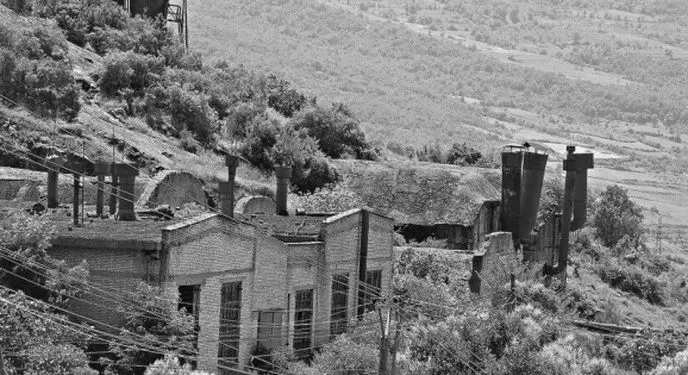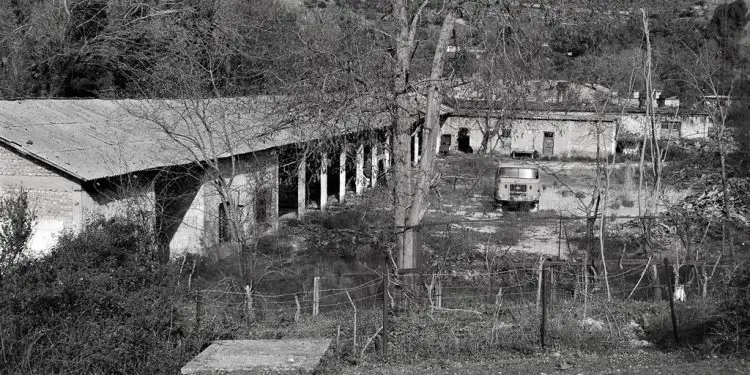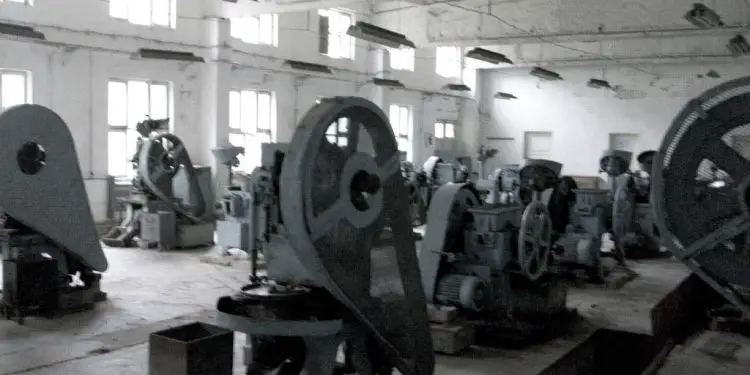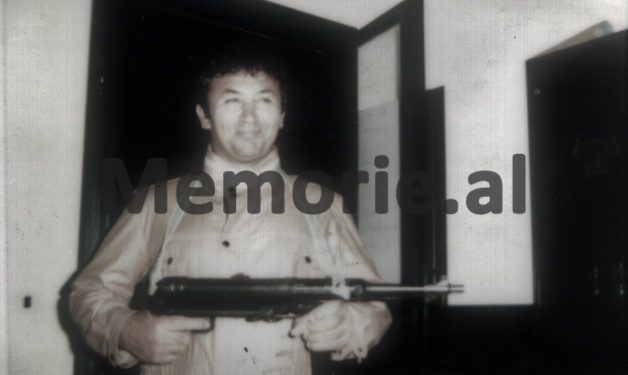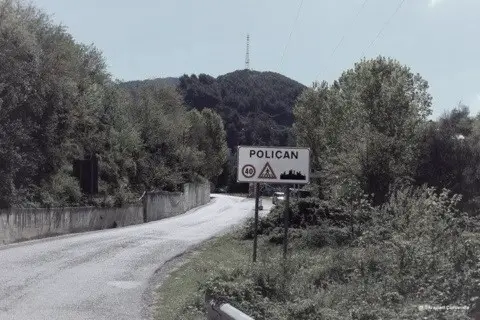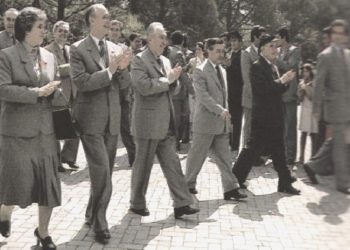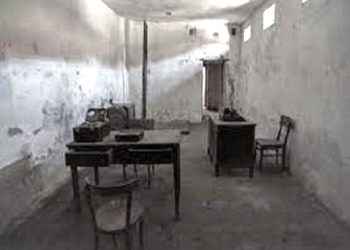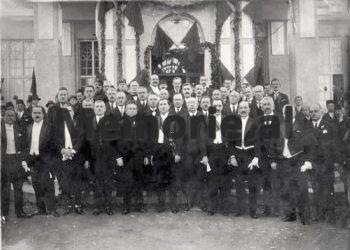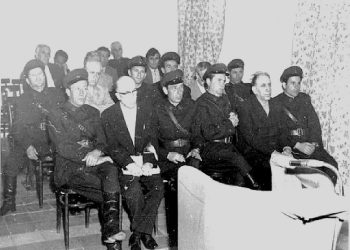Memorie.al / In the endless multitude of secret productions of the Combine, policemen consider the history of the production of the P-84 machine gun, known as “Xhevdet Mustafa’s Kalashnikov”, to be the most interesting. The former member of the Technical Bureau of the Combine and one of the people who dealt directly with the technical tests of the “Mustafa” model, produced in Poliçan, tries to clarify some of the great puzzles that this story has had and expresses his conviction that this is exactly where the state arms traffic for terrorist organizations also started.
Confession of the former member of the Technical Bureau of the Police Combine
“We have signed to be shut up until death, says K. Hoxha with a laugh and continues, if you had asked me a few years ago what was produced at factory, I would not have told them anything.
Because for just a little more than the number of workers that the Combine has, for example, they could mysteriously disappear, it is not known where. Because similar things happened in Poliçan, years ago, where ordinary workers or civilian and military leaders of the Combine disappeared.
It was said that in Poliçan, for every three workers, two are insurance, so even within the family they talked with fear, even about things that had nothing to do with state secrets. But now no one will know about the state secret or about the oath with three signatures that every person took to live in this military city”.
The former member of the Technical Bureau of the Combine says that years ago he read what they wrote in a newspaper about the production of P-84 and wants to give more details about this story. K. Hoxha says that he knows better than anyone else and that he is not sure in his mind that everyone says “P-84”, maybe “Project 84” he says, since this name was not given to him put in Police.
He further says that from the middle of 1984, a shipment of 7.9 mm cartridges came to us. Of USA production, which were later said to be among those who seized Xhevdet Mustafa.
“We produced cartridges for various weapons of the Albanian army, even calibers that did not appear in its armament. But not of this caliber and quality. These cartridges were left to me for safekeeping, but I never counted them as they actually were.
They told us that we had to produce them definitely and as soon as possible because the Albanian army had an urgent need for them. Work immediately began with the projects, with the study of each part, with their production and experimentation.
But it took 7-8 months to successfully produce this item. Then we started its mass production. Cartridges 7.9 mm. of the USA model, were put on the line and all departments worked for two years, producing about 6 million rounds of this caliber per month. The cartridges were made in Wards 102, P-1 and P-3, while the capsules were made in Wards 65-D, 509, 510 and 511.
But all the P-84 capsules had the number 511/1 stamped on them. While Xhevdet Mustafa’s machine gun came to Poliça in the second half of 1984, which was again left in my custody. Then it was whispered that many civil and military enterprises had been working for almost a year, but had achieved nothing.
The first one was the Instrument Factory in Korça, “Petro Papi”, after it there were 11 other enterprises of the mechanical industry, such as: “Autotractor Factory”, and “Dinamo” in Tirana, NSHRAK and “Drini” in Shkodër, Oil Mechanics in Kuçovo, etc. As it was said under their breath, these 12 mechanical enterprises had not been able to copy it, either individually or all together in cooperation with each other.
Therefore, this task was then assigned to the “Kalashnikov” production plant in Gramsh. However, even the Medical Plant, which produced rifles, “Kalashnikov” machine guns, light machine guns, etc., could not produce this article. Then the top leaders of the state asked the Police specialists to do the impossible of this weapon, urgently.
As I said, until then we did not produce weapons, but only various ammunition for the Albanian army and maybe even to sell. Not because we could not produce them, as the machines and equipment we had were among the most modern in the world, coming from China and Sweden, but because the state had not seen fit to produce them as well.
In Poliçan, few people knew that this weapon belonged to Xhevdet Mustafa, only those who were lucky enough to visit the Museum of the Ministry of Interior in Tirana knew because no one told the truth openly. It was an automatic weapon for close combat and with extremely high precision, up to 100 meters. It was 80 cm long and weighed a total of 3.8 kg. along with the long bow-shaped comb, which held 70 rounds.
It was not an automatic weapon of the “Thomson” brand, but of the English “BREN” type, manufactured in the USA. The comb of this weapon was placed from the left and the cartridges came out from the left during shooting, which for us Albanians was dangerous to use. During the tests we did at our training ground, we put it on a bench. It was simple, without a muffler, but it ran quietly.
We consulted with workers and specialists of Departments 118 and 119, where the machines and the most modern equipment of the combine were, and I remember that the first one who took on this project was the talented miller of Poliçan, Riza Mançe. After almost a year, despite all the great shortages, “BREN” was successfully realized, according to the original and in terms of technical and physical parameters.
But only the noise was not eliminated. In order to eliminate this technical defect, another six months of work were done and finally it could be said without fear, that an original “BREN” “Made in Albania” was produced. After this success, Departments 118 and 119 took on the task of producing the entire contracted amount within the next six months.
The Albanian government allocated an additional fund for these departments, where at that time about 100 workers worked. For these workers, the government also violated the criterion of monthly bonuses up to 4% of the monthly salary, rewarding them with 8 to 10 thousand ALL.
Each shift produced only 10 P-84s, and for every 100 produced, we tested 10 on our range, which were extremely accurate, but did not enter the inventory of BRENs required by the contract. These were kept in separate coffers for the account of the Combine.
The first contingent of “BRENs” “Made in Albania” ran away from Police under the pretext that they would be sent for tempering and ratification in Pasha Liman. But, in fact, from there they were sent to the Italian mafia or the hell knows where else”.
Until 1990, 6 thousand pieces of such automatic weapons were produced in Poliçan, of which a part was sent to Pasha-Liman and another part to the warehouses of the Ministry of Interior in Mullet. Only the 1,000 pieces that were tested at the range remained in Poliçan. As far as I know, these kalash came out of the Combine during the 1992 protests and completely disappeared during the 1997 riots.
K. Hoxha says that many of these Kalashnikov are still in the hands of armed civilians, where in many cases the Albanian police have not been able to distinguish that they are products of the Police. Furthermore, he shows that: along with the P-84, billions of 7.9 mm caliber bullets left Poliçan. It was said that an “Xhevdet Mustafa” automatic was sold for 150-200 USD.
While in 1992, the combine made another contract with the Slovenians for 7.9 mm cartridges and for other ammunition, but not for “Made in Albania” tins. Remember the footage of a television chronicle from 1993, where on the Slovenian ship, the crates of ammunition captured in the Adriatic, on the ship where the Deputy Minister of Defense was also, had the initials of the Poliçani Unit.
There was also P-84 canisters on the ship because the crates were written “P-84” and the number “3”, which is the number of the Plant and the year of production 1986. However, the former member of the Technical Bureau of the Poliçani Combine expresses his conviction that the state trafficking of weapons and ammunition started many years ago.
K. Hoxha says that he has been an employee of this plant since 1962 and that he has had important duties for years. He says that he knows everything that happened there and that he does not want to become a bread-and-butter. According to him, everyone in Poliçan knows that in the years 1970-1978, weapons were sold to the Chinese in exchange for paying off the Factory.
While after 1980, weapons and ammunition were sold to Slovenians, Turks, Macedonians, Swedes and even Serbs. But, after the 90s, the state prohibited this trade through the private firm “MEIKO”, which the hell knows what it really is. After the 1990s, with the “MEIKO” brand, weapons were also sold to Arab countries and the Chechens. Memorie.al




